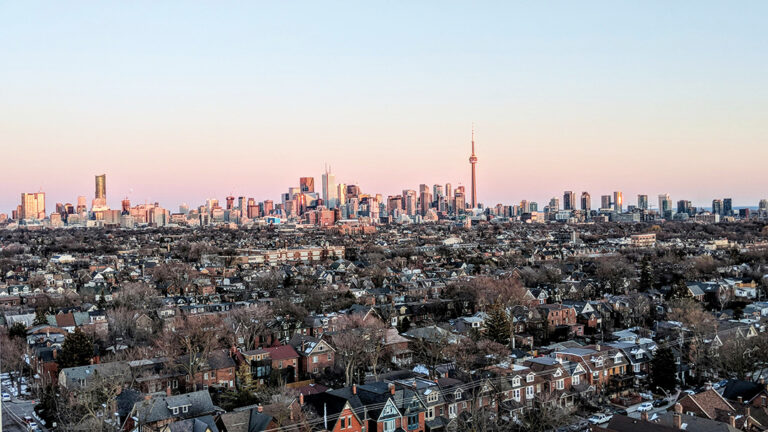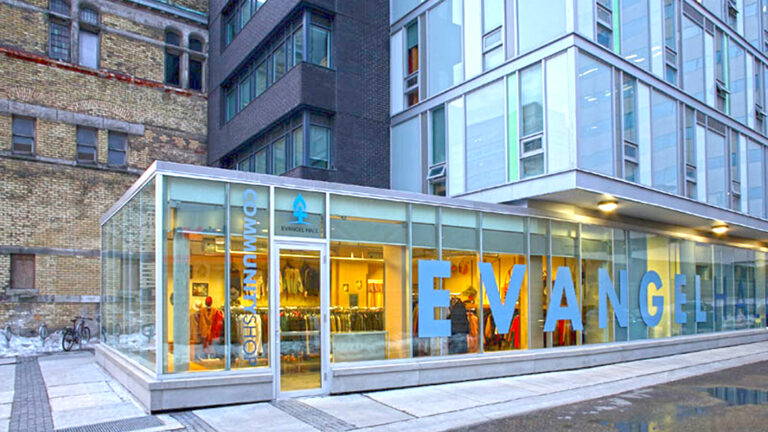In Toronto’s South Parkdale district, rooming houses are key to providing affordable housing for many in the multicultural working-class district. In the face of concerted pressure from developers looking to earn higher profits by converting these units into larger apartments, the Parkdale Rooming House Eviction Prevention Project is aimed at informing existing tenants of their rights and helping them contest evictions.
South Parkdale is a dense working-class neighbourhood experiencing gentrification and housing precarity. “Just under ninety percent of the residents of South Parkdale are renters,” says Cole Webber, a legal worker and community organizing and outreach lead at Parkdale Community Legal Services. “[They] are under very serious pressure from the rental housing market. People are facing intense displacement pressures.”
Located on the western edge of downtown Toronto, the neighbourhood is also one of the city’s most diverse, boasting large Tibetan, Filipino, Polish and Hungarian populations.
“[It is] historically a working class and immigrant neighbourhood, so we’ve seen successive waves of newcomers to the country make their homes in Parkdale,” adds Webber.
Rooming houses—where people rent a room and share common living spaces like bathrooms and kitchens—have formed a major part of the affordable housing stock for lower-income populations. Since 45% of Parkdale residents are single, it is no surprise this type of housing has mushroomed here.
According to Tom Ermidas, in a CBC exposé on Parkdale rooming houses, it’s a lifeline, the only way marginalized people like himself can remain in the neighbourhood.
“I’d be dead,” he says earnestly. “I’ve been [in Parkdale] all my life.”
Although an illegal form of housing in much of Toronto, rooming houses are legal in Parkdale.
His rooming house is licensed, safe and clean. Ermidas says, “It’s God-sent.”
However, the district is facing a two-pronged threat as market trends and legislative gaps are eroding rooming housing affordability and availability.
A changing landscape
In South Parkdale, where the average rent for a studio apartment was $1,038 in Oct. 2020, tenants in rooming houses often pay $500 to $750 for a room, although the ongoing loss of units in the neighbourhood is causing prices to soar.
“There’s a built-in incentive within the rental-housing market for landlords to push out low-income tenants because of the way that rent control works in Ontario,” says Webber.
During a tenancy, rent can be increased once a year and must follow government guidelines. If the tenant is removed from the unit, however, the landlord can raise the rent without limit.
Webber explains, “It’s a situation where landlords stand to get hundreds more dollars a month if they’re able to remove a longstanding tenant and bring in somebody [new].”
Another contributing factor is investors looking to capitalize on a profitable real-estate sector. They buy buildings then change the layout to create larger, more expensive rental units to maximize profits.
“You see these processes playing out in Parkdale pretty intensively,” adds Webber.
A recent change in building ownership is a red flag and is often an indication that tenants will face displacement pressure. But there are legal recourses, and tenants can stave off eviction—they just need a little bit of help to get started.
To assist vulnerable rooming house tenants, Parkdale Community Legal Services and the Parkdale Neighbourhood Land Trust collaborated on the Parkdale Rooming House Eviction Prevention Project.
Through traditional outreach methods like doorknocking and community drop-ins, the non-profits are working to empower them through capacity-building activities like education and leadership training.
“When tenants are interested in engaging, [we help them] hold meetings and form committees at their buildings that could then take collective forms of action to address whatever concerns they have with their living situation,” says Webber.
The development of a Parkdale rooming house association is also in the works. Leaders from different tenant committees will be brought together to identify key issues and develop policy priorities.
More than a roof over one’s ahead
The Community Housing Transformation Centre has awarded $85,000 to strengthen and empower Parkdale rooming-house tenants.
“It’s huge,” Webber says about the funding. “People are facing pretty intense displacement pressure. It’s by far our busiest, most in demand area of work—both in terms of community organizing and casework, where we represent people who are facing eviction in front of the [Landlord and Tenant Board].”
Funding from the Centre is helping the non-profits to have greater impact in the community by allowing them to hire staff to work alongside the housing team at the legal clinic, to expand points of contact and train more tenants.
Webber adds that rooming houses can provide much more than a roof over one’s head: they can provide a sense of community and diminish social isolation.
“The existence of single-room occupancy types of buildings is important because there should be places for single people to be able to live affordably with social interaction as part of their housing situation.
“I don’t want to romanticize this type of housing, but it does meet the specific housing needs of people,” adds Webber.



